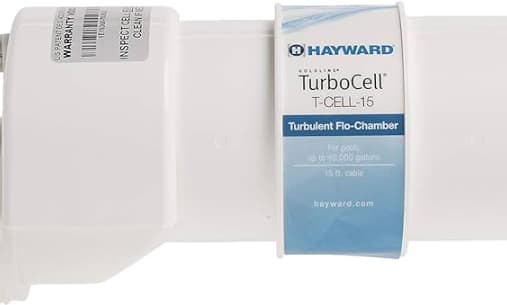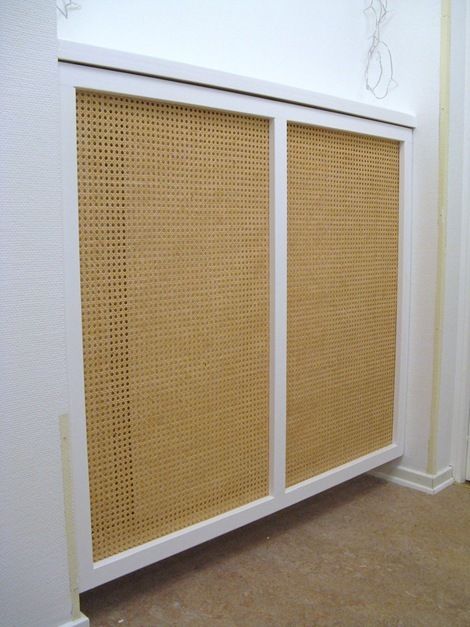Owning a saltwater pool provides many advantages – a soft feel, gentle chlorination, and reduced chemical costs. But when your Hayward salt cell t15 not working properly, all those benefits disappear. Without adequate sanitizer being produced, water quality quickly deteriorates leading to cloudiness, algae growth, and uninviting conditions.
Troubleshooting a non-working T15 unit starts with understanding what’s required for proper operation. These systems rely on a delicate balance of water flow, electricity, pool chemistry, and mechanical components all working together. When something goes out of whack, chlorine output dwindles or ceases completely.
The good news is that with systematic troubleshooting and maintenance, many common T15 problems can be readily identified and fixed by pool owners themselves without needing expensive technician callouts. We’ll walk through the key factors like cell integrity, water balance, voltage, and flow that must be optimized for robust chlorine generation.
Hayward Salt Cell T15 Not Working

While T15 troubleshooting can seem intimidating at first, a little time spent inspecting the obvious components and making thoughtful adjustments will usually get your unit back up and running quickly. If not, we’ll also cover signs it’s time to bring in a pool professional for their advanced diagnostic capabilities.
With some fundamental DIY maintenance steps, a bit of patience, and our tips below, you’ll be on your way to enjoying crystal-clear water again in no time.
How to Fix Hayward Salt Cell T15 Not Working Issue – Troubleshooting Guide:
Let’s dive in and get that Hayward T15 chlorinating like new!
Salt Level
- The optimal range is 2700 – 3400 ppm.
- Test with salt test strips or an electronic tester.
- Low salt will reduce chlorine production.
- High salt can also hinder cell performance.
- Add salt in 10 lb increments is too low.
- Partially drain and refill the pool if the salt is too high.
pH Level
- The ideal range is 7.4 – 7.6.
- Test with electronic or liquid/tablet test kits.
- Low pH accelerates cell corrosion and chloride loss.
- High pH reduces chlorine efficiency and can scale cell plates.
- Adjust with muriatic acid or soda ash as needed.
Hayward Salt Cell T15 Not Working – Step-by-Step Process to Fix It:
Here are some troubleshooting steps for a Hayward Salt Cell T15 that is not working:
- Check the salt level in the pool water. The ideal salt range is between 2700-3400 ppm. Use a test strip to check the current level. Add salt if needed to reach the ideal range.
- Clean the salt cell. Turn off the power to the cell, remove it from the plumbing, and spray it off with a garden hose to remove any buildup or debris. Make sure the plates inside are not damaged or corroded.
- Check the cell cable connections. Make sure the cable is pushed all the way into the cell and the connections are tight and corrosion-free. Check where the cable plugs into the control box as well.
- Check the cell voltage. With the pump running, use a multimeter to test the voltage at the cell. It should be between 12-15 volts. If not, the control board may need to be replaced.
- Inspect the flow switch. Make sure it is functioning properly and water is flowing adequately through the cell. Clean or replace the flow switch if needed.
- Reset the salt cell. Turn the power off and back on to reset the electronic controller. This may clear any errors and get the cell working again.
- Replace the cell. If the voltage is good but the cell still won’t work, it likely needs to be replaced. An old cell with hardened deposits can cause operation issues.
Impacts of Improper pH
pH is one of the most important factors in pool water chemistry. Even small fluctuations out of range can have significant effects on your T15 cell:
- pH below 7.2 dramatically increases the rate of corrosion and erosion of the titanium plates inside the salt cell. This leads to pitting and holes in the plates, reducing their lifespan.
- pH above 7.8 causes more calcium carbonate and other minerals to solidify out of the solution. This can leave thick scale deposits on the salt cell plates, blocking the flow of water and electricity.
- Scale formation from high pH will lower chlorine production and eventually damage the internal plates. Muriatic acid washes should be done regularly to remove scale if pH is chronically high.
- Low pH accelerates the conversion of dissolved chlorine into gas that escapes from the water. So your T15 may be working hard to generate chlorine, but less of it is remaining in the pool as “free chlorine” to sanitize the water.
- The ideal 7.4 – 7.6 pH range provides just the right chemistry for efficient, problem-free electrolysis inside the T15. Cell life will be maximized, chlorine output will be optimized, and your total maintenance costs will be lower.
Testing and Adjusting pH
pH can drift high or low over time, so frequent testing is key:
- Test pH weekly with an electronic probe or liquid/tablet test kit. The latter may be less accurate but can still reveal trends.
- Compare results to your most recent T15 chlorine production – has it declined as pH changed?
- Use muriatic acid to lower pH in increments of 0.2. Retest after a few hours before adding more.
- Baking soda or soda ash will raise the pH gradually. Add a little at a time to sneak up on the proper range.
- Make adjustments in the evening or when pool use is low. Given time, pH will stabilize where you need it.
- Record all test results and additions to see trends over time. Knowing your pool’s pH behavior will make balancing easier.
Total Alkalinity (TA)
- The target range is 80 – 120 ppm
- Test with electronic or liquid/tablet test kits
- TA affects pH stability and buffering capacity
- Low TA causes unstable pH
- High TA makes adjusting pH difficult
- Raise with sodium bicarbonate or lower with muriatic acid
The Role of Total Alkalinity:
Total alkalinity acts as a pH buffer and stabilizer. It prevents the pool water’s pH from “bouncing” all over the place. When TA is low, any small additions of chemicals or environmental factors can cause big pH swings up and down. Higher TA makes your pH readings more stable and reliable.
TA also affects the speed and ease of changing your pH. With low alkalinity, even small doses of acid or base will rapidly alter the pH. You can easily overshoot the target range. However, when TA is higher in the ideal range, pH adjustments are more gradual and controllable.
Test total alkalinity with an electronic photometer or titration kit at least monthly. Adjustments can be made by adding baking soda to increase TA or muriatic acid to lower it. Get TA dialed in first before attempting to fine-tune pH.
Think of it like the shock absorbers on your car – properly inflated alkalinity will smooth out the pH “ride” as you drive towards balanced water chemistry.
Maintaining Ideal Calcium Hardness:
- The optimal level is 200 – 400 ppm.
- Test with electronic or liquid/tablet test kits.
- CH is a measure of dissolved calcium in water.
- Low CH can stain pools and erode cell plates.
- High CH causes scale buildup on cell plates.
- Adjust using calcium chloride flakes or a blended calcium hardness increaser.
Calcium hardness (CH) refers to the amount of dissolved calcium present in pool water. Like TA, proper calcium levels are important for pH stability and for the longevity of your T15 chlorine cell.
Low CH under 200 ppm can lead to corrosion of pool surfaces and erosion of the salt cell plates. Water will pull calcium out of plaster, grout, and metal components to restore balance.
High CH over 500 ppm will result in white scale formation throughout the pool and especially on the titanium plates inside the T15. Scale clogs the plates, reducing chlorine output.
Test CH monthly and add calcium chloride flakes or a liquid/dry CH increaser to boost levels if needed. Only lower CH by partially draining and adding a portion of fresh water if dilution is required.
Aim for that sweet spot between 200-400 ppm and your T15 will thank you with reliable chlorine generation and longer lifespan. CH and pH go hand in hand for total water chemistry harmony.
The Importance of Salt Levels
- The optimal range is 2700 – 3400 ppm.
- Test with salt test strips or an electronic tester.
- Low salt will reduce chlorine production.
- High salt can also hinder cell performance.
- Add salt in 10 lb increments is too low.
- Partially drain and refill the pool if the salt is too high.
We’ve covered pH, TA, and CH – now let’s discuss the critical salt component that your T15 needs to function. These cells rely on proper sodium chloride (NaCl) levels to carry out electrolysis and chlorine generation most efficiently.
Too low, and there’s not enough NaCl present for the T15 to fully produce enough sanitizer. Your chlorine output will be inadequate to maintain clean water and prevent algae.
Too high can also decrease chlorine production while accelerating scale buildup on the titanium plates. Salt provides the raw ingredient, but excessive levels can hinder the process.
Test salt regularly with test strips or an electronic photometer calibrated for NaCl. Add in 10 lb increments if needed, circling the salt around evenly in the pool so it fully dissolves before retesting. Partially drain and refill to lower high salt readings.
Shoot for that ideal 2700 – 3400 ppm salt target for peak T15 performance. Along with balanced pH, TA, and CH, proper sodium chloride concentration is the final piece of the total water chemistry puzzle.
Cyanuric Acid Use and Precautions:
- Stabilizer level should be 30 – 50 ppm
- Test with electronic or liquid/tablet test kits
- Protects chlorine from UV degradation
- Too much stabilizer reduces chlorine efficiency
- Drain and refill the pool to lower excessive levels
Cyanuric acid (CYA) is commonly used as a chlorine stabilizer to shield the sanitizer from degradation by sunlight. However high CYA over 100 ppm can act as an insulator, preventing the T15 cell from efficiently producing enough useable chlorine.
While 30 – 50 ppm CYA is helpful for outdoor pools to prolong the active chlorine residual, levels above that can negatively impact electrolysis inside the T15. Too much CYA ties up chlorine in a nearly unusable state.
Test CYA with a photometer or pool store/strip kit designed for stabilizer. Avoid using dichlor or trichlor pool products that continue boosting CYA. Monitor levels before each swim season.
The only way to lower excessive CYA is to partially drain/refill the pool – dilution with fresh water is needed. Proper stabilizer use is crucial for peak T15 effectiveness.
When to Turn to a Pool Service Pro?
If you’ve diligently tried to balance pH, TA, CH, salt, and CYA levels and your Hayward T15 is still not performing well, it may be time to call in a pool service professional.
Troubleshooting complex water chemistry issues or salt cell problems can be frustrating at times. A technician has specialized digital meters for precision testing, extensive experience balancing all factors for peak efficiency, and knowledge of the latest T15 maintenance procedures.
Some signs it’s time to contact a pro:
- Salt cell plates appear excessively corroded or scaled.
- Chlorine output keeps dropping for no clear reason.
- Water retains a cloudy, green, or swampy appearance.
- Chemistry adjustments aren’t having the expected effect.
A certified pool pro can get to the bottom of any lingering issues and ensure your Hayward T15 returns to maximum chlorine-generating performance. The cost is often well worth it for peace of mind and healthy, sparkling clean water all season long!
Regularly monitoring and correcting your pool’s water chemistry is crucial for keeping a Hayward T15 cell functioning properly and maximizing its chlorine output without accelerated wear and tear.
Aim to check all levels 1-2 times per week during peak swim season for balanced water. Make adjustments in small increments and retest after 24 hours to find the optimal balance.
Frequently Asked Questions about Hayward Salt Cell T15 Not Working Issue:
Here are some common questions pool owners have about troubleshooting problems with their Hayward T15 chlorine generator:
- What should I do if my T15 display says “no flow”?
This usually indicates a water flow issue across the cell. Check for debris clogging the cell and clean it. Inspect the pump basket and filter for blockages. Confirm water flow rate is around 40 gpm. A faulty flow sensor can also trigger this alert.
- Why does my T15 say “low salt” when I just added more?
It takes time for added salt to fully dissolve and circulate throughout the pool. Run the pump for 24 hours after adding salt to let it evenly disperse, then retest and add more if still low. Improper water balance can also interfere with the salt reading.
- The T15 cell plates look really dirty – what should I clean them with?
Calcium scale buildup is common over time. Carefully remove the cell and soak plates in a dilute muriatic acid solution (follow manufacturer instructions). A white vinegar soak can also help remove mild scaling. Avoid abrasive cleaners.
- What causes the power light to be red or flashing?
A red or flashing power light usually indicates high or low voltage outside the acceptable range for the T15. Have a technician test the power supply. Loose connections could also be at fault.
- Why does my T15 seem to make less chlorine in hot weather?
Higher water temps speed up chlorine dissipation. Increase run times to compensate. The % output setting may need to be raised. High cyanuric acid or improperly balanced water can also lower chlorine production.
- I have brown globs in my pool – what causes this?
This is likely phosphate contamination. Have the water tested for phosphates. Use a phosphate remover, switch to phosphate-free chemicals, and closely monitor water chemistry to avoid further incidents.
- How can I tell if my T15 cell needs replacing?
Inspect the titanium plates – if they are excessively pitted, corroded, or coated in scale, replacement may be needed. Chronic low chlorine output despite proper water balance is another telltale sign.
- What should I do if I’m still getting algae with the T15 installed?
Ensure the T15 is actually turned on and set to produce chlorine. Shock treat the pool if needed. Scrub away existing algae, then closely monitor water chemistry and run times to prevent regrowth.
Also Check:
Conclusion:
A malfunctioning Hayward T15 salt chlorine generator can be frustrating, but proper troubleshooting and maintenance will have it back up and running at peak performance in no time. As we’ve covered, there are a few key areas to focus on:
First, inspect the cell plates and power supply. Clean off any scale buildup or corrosion, check for damage, and replace parts as needed. Verify the T15 is receiving good clean power in the proper voltage range.
Next, test and balance your pool’s water chemistry. Pay particular attention to salt, pH, total alkalinity, calcium hardness, and cyanuric acid levels. Make small incremental adjustments and retest frequently. Proper water balance is crucial for the T15’s electrolytic process.
While Hayward Salt Cell T15 Not Working, troubleshooting T15 can get technical at times, a bit of preventative maintenance and watchful water chemistry will keep problems to a minimum.
And if issues still persist, don’t hesitate to enlist the help of a professional pool service company. Their expertise can get your chlorine generation back on track quickly.


